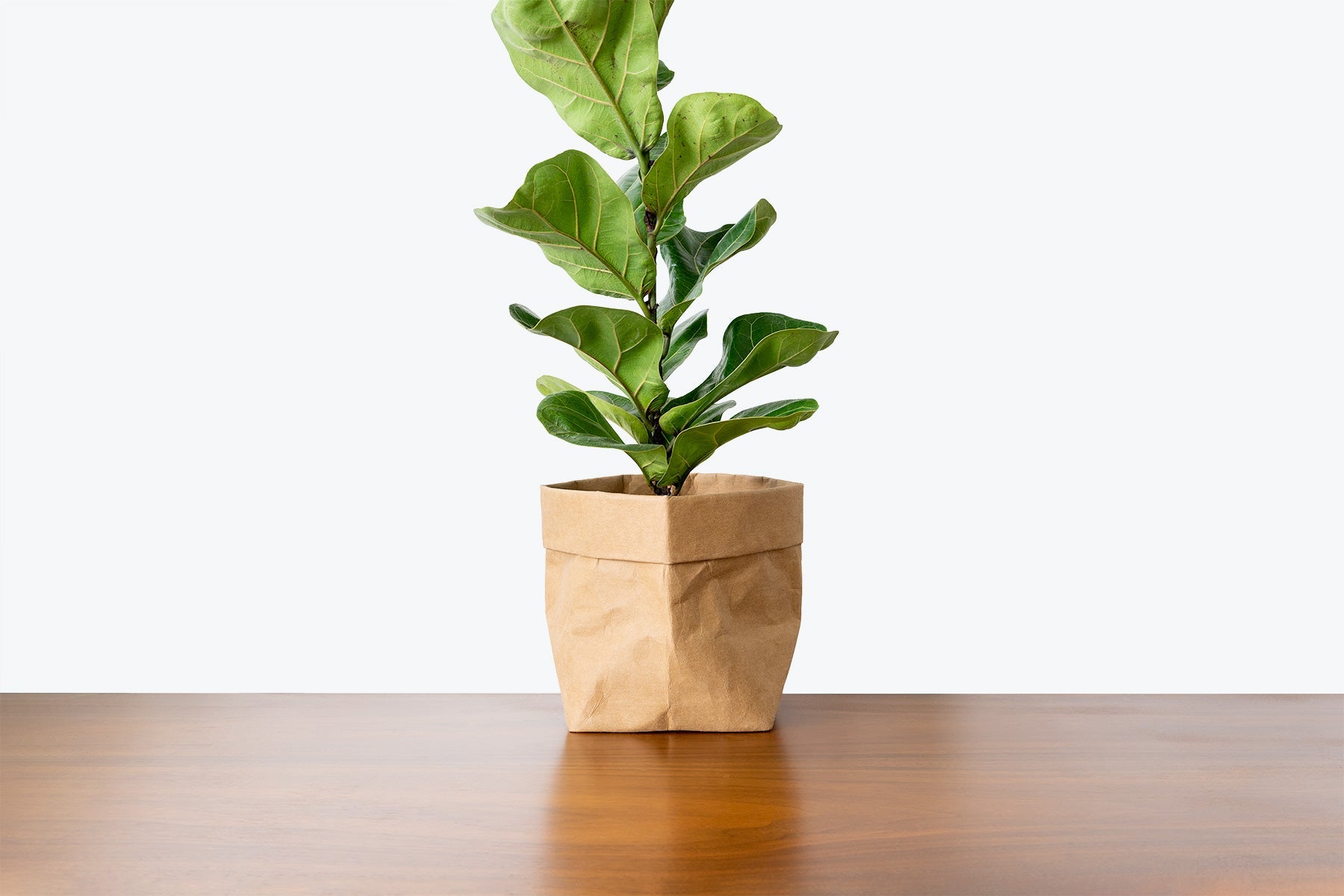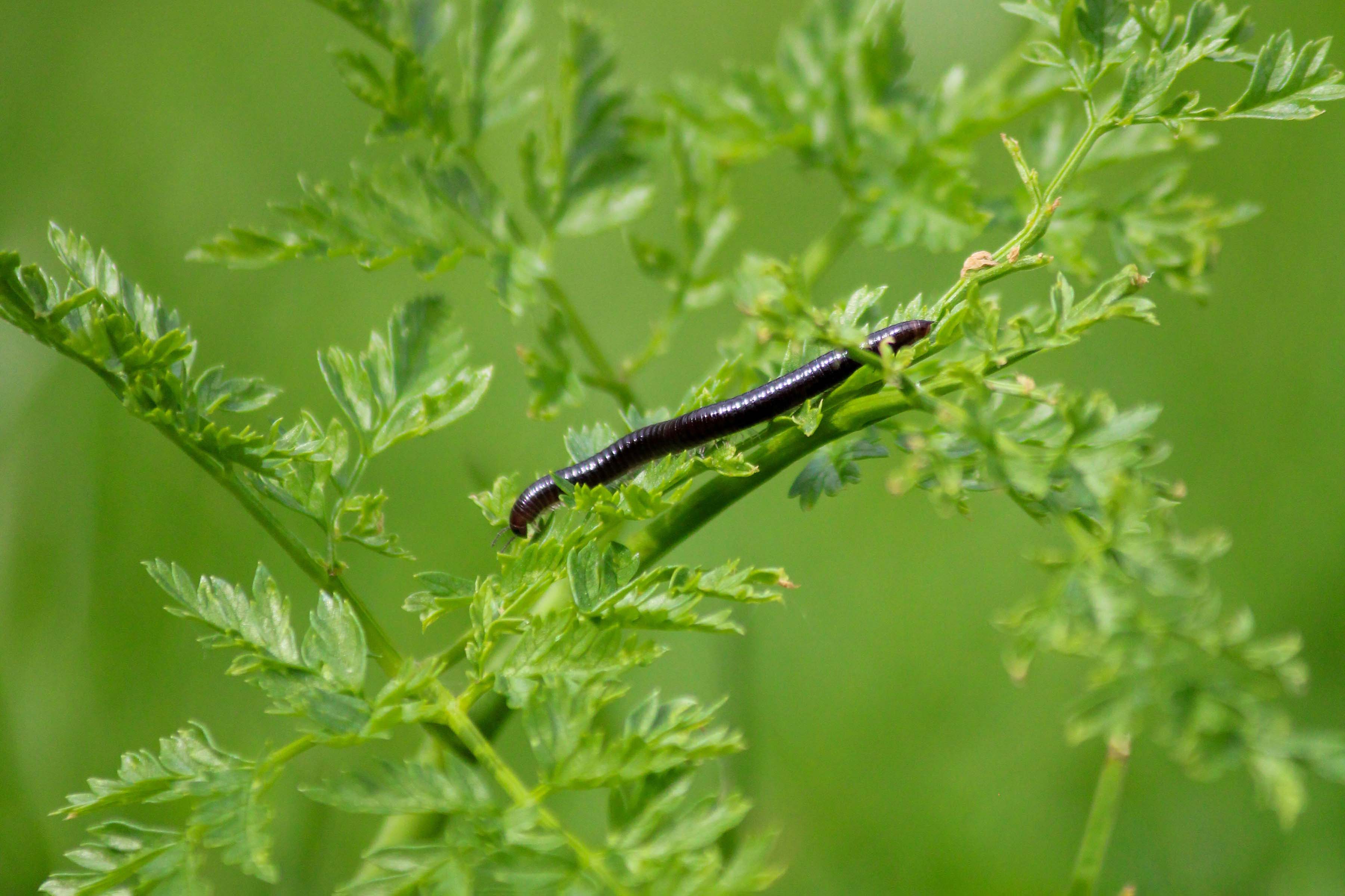
How to take care of your Fiddle Leaf Fig
Now, I know the Ficus Lyrata, or Fiddle-Leaf Fig, as most people commonly know it, is probably on your plant wishlist to fulfill your ultimate aesthetic dreams, but be aware, it is not a walk in the park to own one of these beauties. Although they are statement plants, filling up any space in a beautiful and glorious way, come prepared to keep your finicky baby thriving!
△ 10" Fiddle Leaf Fig Tree
You can generally purchase them in bush form, where the leaves fill the base of the stock all the way to the top along with multiple stems, or in tree form, which are more common and what you’ll see in almost any home decor magazine. The large, heavily veined, majestic leaves, resembling fiddles in their shape, give these plants their name, the Fiddle-Leaf Fig.
Along with Rubber Trees, Audrey’s and Weeping Figs, all of which are also great additions to any home, they belong to the Ficus family. Just like these other Ficus’, Lyrata’s need some time to adjust to the home that they are in, which could include potential leaf loss and browning of leaves. Our Canadian homes are dry, drafty and darker throughout the winter, making for much different environments than the greenhouses and garden centres that they were grown in. We want you to be cautious of all these things and come prepared to care for one before investing in such a beautiful statement plant.
That being said, let’s get into the nitty-gritty. All of the potential problems you could encounter when caring for your Lyrata are included at the very end of this article, but I’ve outlined all the basic care guidelines you can follow below for a happy, healthy, aesthetically-pleasing, magazine-worthy Fiddle-Leaf Fig.
Interesting fact: Although the word “fig” is included in their name, the Fiddle-Leaf Fig actually does not bear any fruit!
Light Requirements
As opposed to lots of other houseplants, there are only a few specific spots I would recommend placing a Ficus Lyrata if you want to be successful with one that is. They need very, very bright, filtered light, even being able to take full sun. Since their leaves are so large, they need a lot of light in order to create food to live and thrive! Do not place it in low to medium light as that will undoubtedly cause problems for you in the future, and we want you to have all the success when caring for your purchases.
When looking where to place your Fig tree, use the following example spaces as a guideline:
- Directly next to a West facing window (if there is a lot of direct sun for more than 3 hours, consider placing a sheer blind or pulling the plant slightly back as too much sun can cause burn)
- Directly next to a South or East facing window that has no blinds, where it will receive lots of morning sunlight
- A small distance (no more than 3 ft.) back from a West facing window that has no blinds
- In a brightly lit room, potentially under a skylight, where the room/plant gets a lot of indirect (or direct), bright light
Although research will tell you that these tropicals can handle full sun, keep in mind that they are often shade-grown, meaning the nursery that they were grown in had a shade covering over them. That’s for however many years they were grown before they got to your home too! They received plenty of extremely bright light but not a lot of direct light. You need to be considerate of that fact if you decide to place them in full sun, because it may cause some burn and leaf loss as it adjusts to the increased light levels. That being said, the new growth will be beautiful and glossy.
△ 10" Fiddle Leaf Fig Bonsai
Another thing to keep in mind if you place it in full sun outside, it needs to adjust when you bring it back in, meaning adjusting to a lot less light.
The key to these plants is CONSISTENCY.
They want the same amount of light, consistent watering, controlled temperatures and humidity, any change in routine could cause leaf loss or browning. If your plant is further from a window in the summer, consider placing it closer to the window over the winter to keep bright light on it. Otherwise, don’t move your plant if it is happy where it is. Also, never touch it to a window as the cold can bother your plant over time as well.
This article will seem like I’m going back and forth (e.g. place it near a bright window but don’t let it touch the window as the cold may damage your plant), but I just want you to be aware of any reason that could be troubling your plant. They didn’t get the nickname “diva” for nothing!
The sign of a happy Fiddle-Leaf Fig: perky, upright leaves!
Unlike other Ficus’, Lyratas are not commonly trimmed. I would only recommend trimming if it got too tall and you wanted to chop it back a bit, or if you wanted to encourage some branching. It should branch off at the location where you cut it, as long as there are still a significant amount of leaves remaining.
Watering Requirements
When it comes to watering, consistency is again very important. When the top couple inches of soil are dry, soak the soil thoroughly, ensuring all of the soil is getting wet and providing water to the roots. If it is going through too quickly, aerate the soil so that it will disperse evenly throughout the soil. Fiddle-Leaf Figs can handle drying out a bit more as well, just make sure you treat it the same every time and try to let it dry out to the same point before watering it again. After watering, get rid of any excess water so that your plant does not sit in any standing water as that will lead to root rot and loss of leaves.
△ 10" Fiddle Leaf Fig Bush
If you really feel like spoiling your plant, (which you should do every once in a while obviously!) use rainwater or distilled water to water your plant. Rainwater has a lot of micronutrients that tap water just doesn’t contain. Using solely tap water can also cause a build-up of chlorine and other chemicals in your plant’s soil over time so it’s generally a good rule of thumb to flush the soil every once in a while.
It’s also a good idea to shower off your leaves every once in a while, as this can wash off any dust or potential pests that have accumulated on them.
If, when watering, the soil seems to run through very quickly, or the soil is drying out incredibly fast, check the roots. Fiddle-Leaf Figs can grow very fast with aggressive root systems if they are super happy and healthy, so it is common to need to repot your plant annually. When you do, only go up one pot size at a time (roughly two inches) and mix some fresh soil in with the old as well.
Humidity
Even though they can survive in our basic home humidity, they love a warm, humid environment! If you are willing to spend the extra money and effort, here are some ways you can increase the humidity in the air around your beloved Ficus:
- Mist your Lyrata’s leaves every once in a while to increase the ambient humidity around the plant (weekly should be fine, if problems occur, check the list at the end of this article to find a potential solution)
- Place the nursery pot on top of a bed of rocks that are covered in water, which increases the humidity in the air around the plant
Do not place one of these near a draft or very cold window, they are extremely sensitive to temperature changes and dry, blowing air! Again, I will keep saying it throughout this whole guide: consistency is key.
Fertilizing
Lyratas are not too picky when it comes to fertilizer and they really don’t need it that often as it can make them become leggy and stretched out. Fertilize once a month through the Spring and Summer months and then do not fertilize throughout the Winter. Just use a generic house plant fertilizer that any greenhouse, garden centre, or plant shop offers!
Toxicity
Unfortunately, since they are mildly toxic to humans and pets, mouth and stomach irritation will occur if ingested, even potential vomiting. So keep them out of reach of little hands and mouths!
Common Pests & Problems
Get ready for this list as it is extensive. I want to go over a variety of potential problems and scenarios so that you are fully equipped to deal with whatever problems your Fig could throw your way!
Red spotting on leaves:
This is most often a spider mite problem and can be solved by washing the plant off, allowing the leaves and stems to dry off, then treating the entire plant (stems included!) with a neem oil mix or a spider mite spray you can get from your local garden centre or plant shop.
Brown spotting with yellow surrounding the spot:
Fungal disease is very common with Lyrata’s, stemming from lack of airflow or too much moisture sitting on leaves. When this occurs, encourage better air circulation (still avoiding dry drafts) and keep an eye on your watering, making sure you aren’t overwatering. Also, avoid misting the leaves too much as water will encourage the fungus. You can either purchase a fungicide or mix a batch of your own by mixing 1-2 teaspoon(s) of baking soda with 1-2 teaspoon(s) of mineral oil in a spray bottle of water, shake well, then spray the infected area!
Tip: remove any dead matter as you see it as this can attract pests! Just make sure you don’t remove any more than 10% of the overall leaf count as this can shock your plant.
Leaves curling and crisping up:
If you have checked and there are no bugs, it is probably not getting enough water and the air is not humid enough surrounding it. Again, ensure there are no cold drafts occurring either.
Dying off at the top:
Chop it back and it should sprout and branch from the trunk!
Limp leaves:
check you watering, if the soil is too wet all the time your plant will not be very happy. If the soil is too dry for too long, your plant will again, not be loving life. Going from extremely dry to saturated with water may cause leaf loss but allow your plant to adjust. Try to find a consistent watering schedule.
There are probably more potential problems, but I tried to hit the most common of them. Even though there are a lot of suggestions throughout this guide, if your plant is perfectly happy near a draft and with regular old tap water, keep doing what you do! Sometimes they can get unhappy out of the blue and then you can come and look at these solutions to see if one would work for your plant. Just try to mimic their natural environment as much as you possibly can (warm, humid climates where they get consistent moisture and even temperatures).
This care guide is the exact reason why we call them divas, because they can be so happy, then one little thing changes and they have a temper tantrum… Could be because the weather is changing and there is less light, etc. the list is endless! I know it seems like there is no one solution but I hope this can give you a head start on problem-solving. As I’ve said before, make sure your care for your Ficus is consistent!









